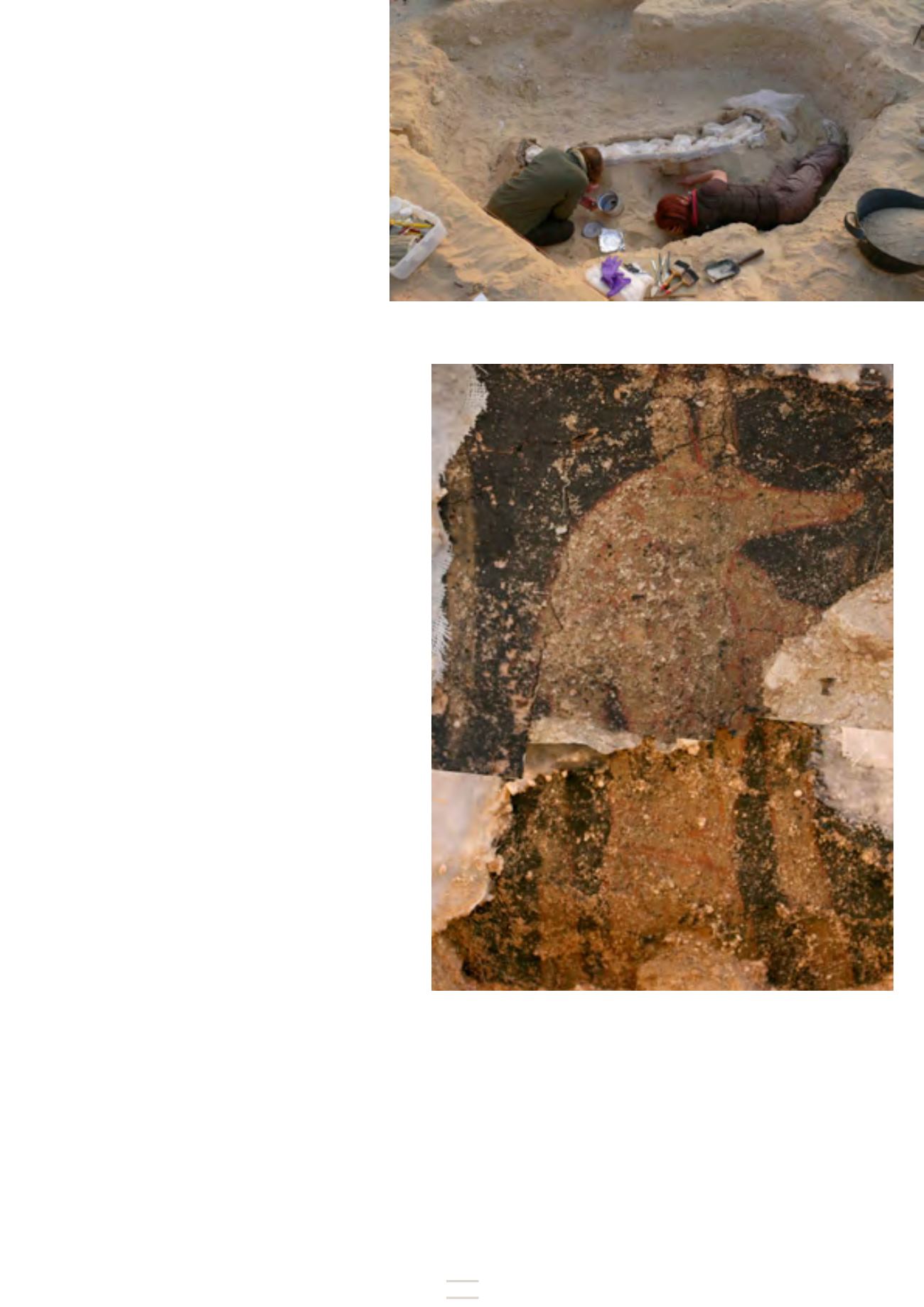

13
a UK-registered charity (in effect, an NGO)
called the Amarna Trust as a means of rai-
sing money independently. The EES agreed
that the Amarna expedition would no lon-
ger run under its auspices. It became an
expedition of the McDonald Institute of Ar-
chaeological Research (University of Cam-
bridge) though remaining financially inde-
pendent.
If you look now at the site map of Tell
el-Amarna dating from the time of Napole-
on and Lepsius, we do not see a big diffe-
rence between then and today. The remains
of Amarna are flat, there are no vertical buildings
except for the two famous columns of the temple
of Aton. What do you see in the future for this
site? I know that a new phase of development of
the Amarna Project has been planned and that a
reconstruction project is already under way. But
what exactly does it consist of? Are you conside-
ring rebuilding the ancient temples and palaces
in their entirety, complete with pillars, columns,
walls...or what are your goals?
Modern archaeology examines the ground of
ancient sites far more slowly than was the case in
the first half of the 20th century. Careful excava-
tion and study, often looking again at places
excavated in the past, can continue more or less
indefinitely. In 1987 the expedition also took the
first step in cleaning one of the major buildings,
the Small Aten Temple. This led to a scheme to
make clearer the outlines of the building in new
materials, limestone and mud brick where ap-
propriate. This policy of cleaning and repair has
continued, taking in the North Palace, one of the
private houses and now the Great Aten Temple.
One aim is to make parts of the site more intelli-
gible to visitors. Another is to slow the rate of loss
and, in particular (by demonstrating care), to
alert the local communities to the importance of
the site.
Because mud bricks are fragile, whatever we re-
pair in this material needs to be kept under
observation and, when necessary, repaired again. As far as possible, the
original material is kept visible but sometimes, where walls have vani-
shed, it is necessary to lay a few courses of bricks to show where the walls
ran. In the case of stonework, all blocks were removed from their founda-
tions after the end of the Amarna period. But because the foundations
often preserve the lines of walls and other features, we lay one or two
courses of fresh stones to mark the positions. Apart from the columns at
the Small Aten Temple we have not attempted anything more ambitious,
which I would consider a mistaken policy.
One of the decayed but decorated coffins from the South Tombs Cemetery receiving protective tre-
atment prior to the removal of the wooden panels to the expedition house for expert conservation.
Small area of one of the wooden coffins briefly exposed before being covered by protective
conservation materials. It shows a canine-headed deity, and the continuing influence of
traditional beliefs at Amarna.


















